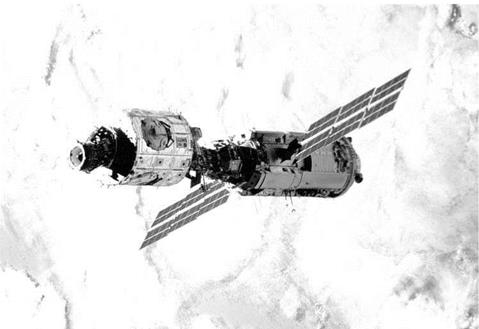STS-88
|
Int. Designation |
1998-069A |
|
Launched |
4 December 1998 |
|
Launch Site |
Pad 39A, Kennedy Space Center, Florida |
|
Landed |
15 December 1998 |
|
Landing Site |
Runway 15, Shuttle Landing Facility, KSC, Florida |
|
Launch Vehicle |
OV-105 Endeavour/ET-097/SRB BI-095; SSME #1 2043; #2 2044; #3 2045 |
|
Duration |
11 days 19hrs 17 min 57 sec |
|
Call sign |
Endeavour |
|
Objective |
ISS assembly flight 2A; mating of Unity docking node to Zarya control module |
Flight Crew
CABANA, Robert Donald, 49, USMC, commander, 4th mission Previous missions: STS-41 (1990); STS-53 (1992); STS-65 (1994) STURCKOW, Frederick Wilford, 37, USMC, pilot ROSS, Jerry Lynn, 50, USAF, mission specialist 1, 6th mission
Previous missions: STS 61-C (1985); STS-27 (1988); STS-37 (1997);
STS-55 (1993); STS-74 (1995)
CURRIE, Nancy Jane, 39, US Army, mission specialist 2, 3rd mission Previous missions: STS-57 (1993); STS-70 (1995)
NEWMAN, James Hanson, 42, civilian, mission specialist 3, 3rd mission Previous missions: STS-51 (1993); STS-69 (1995)
KRIKALEV, Sergei Konstantinovich, 40, civilian, Russian, mission specialist 5, 4th mission
Previous missions: Soyuz TM7 (1988); Soyuz TM12 (1991); STS-60 (1994)
Flight Log
This mission initiated the construction of the International Space Station (ISS), a project which had long been proposed but which so often looked as though it would never become reality. In 1984, President Ronald Reagan had challenged NASA to build a space station within a decade. An international team assembled to accomplish the feat, but an over-complicated and expensive design, coupled with the loss of Challenger and doubts over the reliability of the Shuttle had added years to the project. By 1993, the idea was still only on the drawing board and in mock-ups. After several redesigns, a new partnership with Russia helped put the programme back on track. The series of Shuttle-Mir dockings proved that the Shuttle was perfectly capable of doing what it was originally envisioned for back in 1969 – servicing and supplying a space station. A simplified station design helped focus
|
Shortly after release from Endeavour’s cargo bay, the connected Unity and Zarya modules are photographed during a fly-around survey, documenting the completion of a major milestone in the ISS programme with the connection of the first two elements in orbit |
the ISS project to the point where the first element of the station was launched on 20 November 1998. This was not an American element, however, but the Russian FGB Zarya (“Dawn”), designed to provide electrical power, attitude control and computer command and later serve as a fuel depot and storage facility. The next element of the station would be the link between the US and the Russian elements. Known as Node 1 (“Unity”), it featured six docking ports that would enable the facility to be further expanded.
Unity was the primary payload of STS-88, the first American ISS Shuttle mission, which would use the RMS to attach the module to the forward docking port of Zarya. The launch of STS-88 was postponed by 24 hours on 3 December due to problems with hydraulic system number 1. By the time the problem was cleared, it was too late in the launch process to initiate the final countdown, so the first American element had to wait until the following day to lift off without further incident.
During the approach to Zarya, the crew used their time to prepare Unity by testing the RMS. On 5 December, they attached the end effector to the node, lifting it out of the rear of the payload bay and relocating it in the front of the payload bay along with the Shuttle docking system. This would later allow the crew access through internal hatches from the crew compartment of Endeavour into Unity and on into Zarya. The attachment of Unity to Zarya occurred on 6 December, using the RMS to grasp a grapple feature on Zarya and using the Shuttle’s engines to gently nudge the
Unity docking system on to that of Zarya. The embryonic ISS configuration was created. After powering up Unity and checking the integrity of the docking seals and internal atmospheres, the hatches were opened, allowing Cabana and Krikalev to symbolically float into ISS together for the first time.
During the three EVAs (7 Dec for 7 hours 21 minutes; 9 Dec for 7 hours 2 minutes; and 12 Dec for 6 hours 59 minutes), Ross (EV1) and Newman (EV2) removed launch restraint pins on the four hatches on Unity that would be used in future operations, nudged two stuck antennas on Zarya into position, installed sunshades over Unity’s data relay boxes, disconnected the umbilicals that were used to mate the units, and installed a handrail, a tool bag and an S-Band communication system. They also tested the SAFER units.
Inside Zarya, Krikalev and Currie replaced a faulty unit, inspected the inside of the module and removed some launch bolts and restraints. The undocking from ISS took place on 13 December. After a fly-around photographic inspection, the crew prepared for landing, having completed one of the most important and critical Shuttle flights. One of the largest international construction projects in history – and certainly the largest off the Earth – had begun.
The STS crew called themselves “Dog Crew 3’’, since two of them had flown on previous “Dog Crews’’. Thus, the crew were known as “Mighty Dog’’ (Cabana), “Devil Dog’’ (Sturckow), “Hooch” (Ross), “Laika” (Currie), “Pluto’’ (Newman) and “Spotnik” (Krikalev).
Milestones
210th manned space flight 123rd US manned space flight 93rd Shuttle mission
41st US and 72nd flight with EVA operations 13th flight of Endeavour 1st Shuttle ISS mission 1st Endeavour ISS mission











